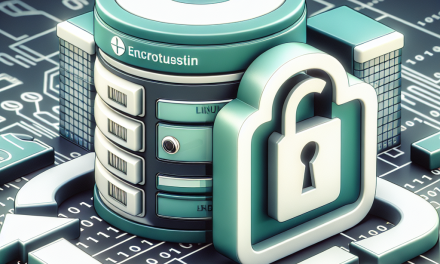Securing Linux servers is paramount in today’s ever-evolving cybersecurity landscape. As organizations increasingly adopt central authentication methods, the System Security Services Daemon (SSSD) has emerged as a convenient solution to connect Linux servers with identity sources like Active Directory (AD) and LDAP. However, with convenience comes responsibility; securing your SSSD setup is essential for ensuring that your authentication methods remain uncompromised. This guide will explore effective strategies for hardening SSSD deployments with a focus on enhancing Kerberos security.
Understanding SSSD and Kerberos
SSSD is a daemon providing access to different identity and authentication providers, including Kerberos, LDAP, and FreeIPA. Kerberos, a network authentication protocol, allows secure authentication for users and services through the use of symmetric cryptography and a trusted third party.
While SSSD simplifies the authentication process, it also introduces potential vulnerabilities that can be exploited if not appropriately configured and hardened. Here are several key steps to lock down your SSSD and Kerberos implementation on Linux servers.
1. Secure Configuration of Kerberos
a. Use Strong Encryption
Configure Kerberos to use strong encryption types. Edit your Kerberos configuration file, /etc/krb5.conf, to specify strong encryption algorithms in the [libdefaults] section:
[libdefaults]
default_realm = EXAMPLE.COM
ticket_lifetime = 24h
renew_lifetime = 7d
forwardable = true
encryption_types = aes256-cts,h.aes128-cts,arcfour-hmacb. Strong Key Distribution Center (KDC) Security
Ensure your KDC (Key Distribution Center) is securely configured and running on a hardened server. It’s vital to limit network access to the KDC by employing firewall rules to restrict which hosts can communicate with it. Additionally, use secure network protocols (e.g., SSH, VPN) to access the KDC.
c. Limit Kerberos Ticket Lifetimes
To minimize the risks of stolen tickets, configure short lifetimes for Kerberos tickets in krb5.conf. Adjust ticket_lifetime and renew_lifetime as necessary to strike a balance between usability and security.
ticket_lifetime = 10h
renew_lifetime = 1dd. Principal Management
Regularly audit the Kerberos principals. Remove any inactive accounts and regularly change credentials for service principals to reduce the risk of exploitation.
2. Configuring SSSD Securely
a. Set Appropriate Permissions
Ensure that the SSSD configuration file (/etc/sssd/sssd.conf) has restrictive permissions. Typically, it should only be readable by the root user:
chmod 600 /etc/sssd/sssd.confb. SSSD Configuration Checklist
Here is an example of a hardened sssd.conf.
[sssd]
services = nss, pam
config_file_version = 2
domains = your_domain
[domain/your_domain]
id_provider = ad
auth_provider = krb5
access_provider = ldap
krb5_realm = YOUR_REALM
krb5_kpasswd = kpasswd.example.com
krb5_server = kerberos.example.com
enumerate = false
cache_credentials = true
default_shell = /bin/bash
default_domain_suffix = example.com
# Uncomment to enable verbose logging
# debug_level = 5In this configuration, ensure:
enumerateis set tofalseto prevent unnecessary exposure of user information.cache_credentialsis set totruewhile using secure caches.
c. Disable Anonymous Access
Disable anonymous access to LDAP by specifying appropriate Bind DN credentials. This helps to minimize any unauthorized access to user and group information.
ldap_id_use_starttls = true
ldap_tls_reqcert = demand3. Regular Updates and Monitoring
a. Apply Security Updates
Regularly apply security updates to your Linux distribution and SSSD. Use your package manager to ensure you are running the latest stable version with security patches.
sudo apt update && sudo apt upgradeb. Monitor Logs
Leverage the logging capabilities of SSSD to keep an eye on authentication attempts. Check /var/log/sssd/sssd.log and adjust the debug_level to a higher level temporarily during incident investigations or regular audits.
4. Implementing MFA
Integrating Multi-Factor Authentication (MFA) can significantly enhance the security of your Linux servers. Consider using PAM (Pluggable Authentication Module) to configure MFA alongside SSSD. This may involve implementing tools like Google Authenticator or Duo Security.
sudo apt install libpam-google-authenticatorConfigure PAM and modify the /etc/pam.d/sshd or respective service configuration to include MFA checks.
Conclusion
Hardening SSSD and the underlying Kerberos authentication framework is a critical step in securing Linux servers against unauthorized access. By implementing robust configuration practices, regular monitoring, and updating, organizations can create a defense-in-depth approach to their authentication systems.
As the landscape of cybersecurity continues to evolve, so too should your security protocols. Always remain vigilant, regularly review your security policies, and stay updated with the latest best practices. For more detailed guidance, reach out through our blog or connect with our Linux security experts at WafaTech.
Stay secure!





